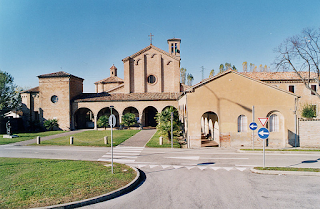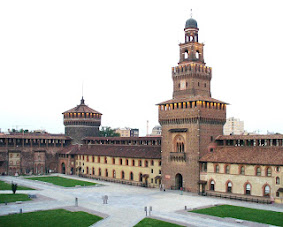Michele Schirru - would-be assassin
Anarchist executed for plotting to kill Mussolini
The Sardinian-born anarchist Michele Schirru was executed by firing squad in Rome on this day in 1931. Schirru, a former socialist revolutionary who had emigrated to the United States, had been arrested on suspicion of plotting to assassinate the Fascist dictator Benito Mussolini. Seized at a hotel in Rome in February 1931, having arrived in the capital about three weeks earlier, he was tried by the Special Fascist Court and after he had loudly declared his hatred of both Fascism and communism was found guilty. A death sentence was handed down at a further hearing on May 28 and the execution was carried out at first light the following day at the Casal Forte Braschi barracks on the western outskirts of Rome, where 24 Sardinian soldiers had answered the call to volunteer for the firing squad. Schirru died screaming ‘long live anarchy, long live freedom, down with Fascism’, which bizarrely won posthumous praise from Mussolini, who made reference to Schirru’s distinguished service in Italy’s army during the First World War and applauded his bravery for declaring his unwavering conviction to his cause even as the riflemen were about to squeeze the trigger. Read more…
_______________________________________
Franca Rame – actress, writer and politician
Artistic collaborator and wife of Dario Fo
The actress and writer Franca Rame, much of whose work was done in collaboration with her husband, the Nobel Prize-winning actor, playwright and satirist Dario Fo, died in Milan on this day in 2013 at the age of 83. One of Italy's most admired and respected stage performers, her contribution to Dario Fo’s work was such that his 1997 Nobel prize for literature probably should have been a joint award. In the event, on receipt of the award, Fo announced he was sharing it with his wife. Rame was also a left-wing militant. A member of the Italian Communist Party from 1967, she was elected to the Italian senate in 2006 under the banner of the Italy of Values party, a centre-left anti-corruption grouping led by Antonio di Pietro, the former prosecutor who had led the Mani pulite (“Clean Hands”) corruption investigation in the 1990s. Later she was an independent member of the Communist Refoundation Party. Her political views often heavily influenced her writing, in which her targets tended to be the Italian government and the Roman Catholic Church. She was also an outspoken champion of women’s rights. Read more…
_____________________________________
Katie Boyle – actress and television presenter
Daughter of Italian Marquis became the face of Eurovision
Television personality Katie Boyle was born Caterina Irene Maria Imperiali di Francavilla on this day in 1926 in Florence. The actress, who became known for her appearances on panel games such as What’s My Line?, and also for presenting the Eurovision Song Contest on the BBC, died in 2018 at the age of 91. She was the daughter of an Italian Marquis, the Marchese Imperiali di Francavilla, and his English wife, Dorothy Kate Ramsden. At the age of 20, Caterina moved from Italy to the UK to begin a modelling career and she went on to appear in several 1950s films. In 1947 she had married Richard Bentinck Boyle, the ninth Earl of Shannon, and although the marriage was dissolved in 1955, she kept the surname, Boyle, throughout her career. Boyle was an on screen continuity announcer for the BBC in the 1950s and then became a television personality who regularly appeared on panel games and quiz programmes. She was the presenter of the 1960, 1963, 1968 and 1974 Eurovision Song Contests, impressing viewers with her range of European languages. Boyle has also worked in the theatre and on radio and has been an agony aunt for the TV Times. Read more…
____________________________________
Virginia de’ Medici – noblewoman
Duchess was driven mad by husband’s infidelity
Virginia de’ Medici, who for a time ruled the duchy of Modena and Reggio, was born on this day in 1568 in Florence. She protected the autonomy of the city of Modena while her husband was away, despite plots against her, and she was considered to have been a clever and far-sighted ruler. Virginia was the illegitimate daughter of Cosimo I de’ Medici, Grand Duke of Tuscany and his mistress, Camilla Martelli. Her paternal grandparents were Giovanni dalle Bande Nere and his wife Maria Salviati, who was the granddaughter of Lorenzo the Magnificent. Her maternal grandparents were Antonio Martelli and Fiammetta Soderini, who were both members of important families in Florence. In 1570, Cosimo I contracted a morganatic marriage with his mistress, Camilla, on the advice of Pope Pius V, which allowed him to legitimise his daughter. Virginia lived with her parents at the Villa di Castello during the summer and in Pisa in the winter. Cosimo I’s older children resented his second marriage and after his death in 1574 they imprisoned Camilla in a convent. Virginia’s older brothers negotiated a marriage for her with a member of the Sforza family. Read more…
.jpg)






.jpg)


.jpg)
.jpg)


_Profile_of_a_Young_Lady_(Lucrezia_Crivelli).jpg)

.jpg)

.jpg)

.jpg)







.jpg)
